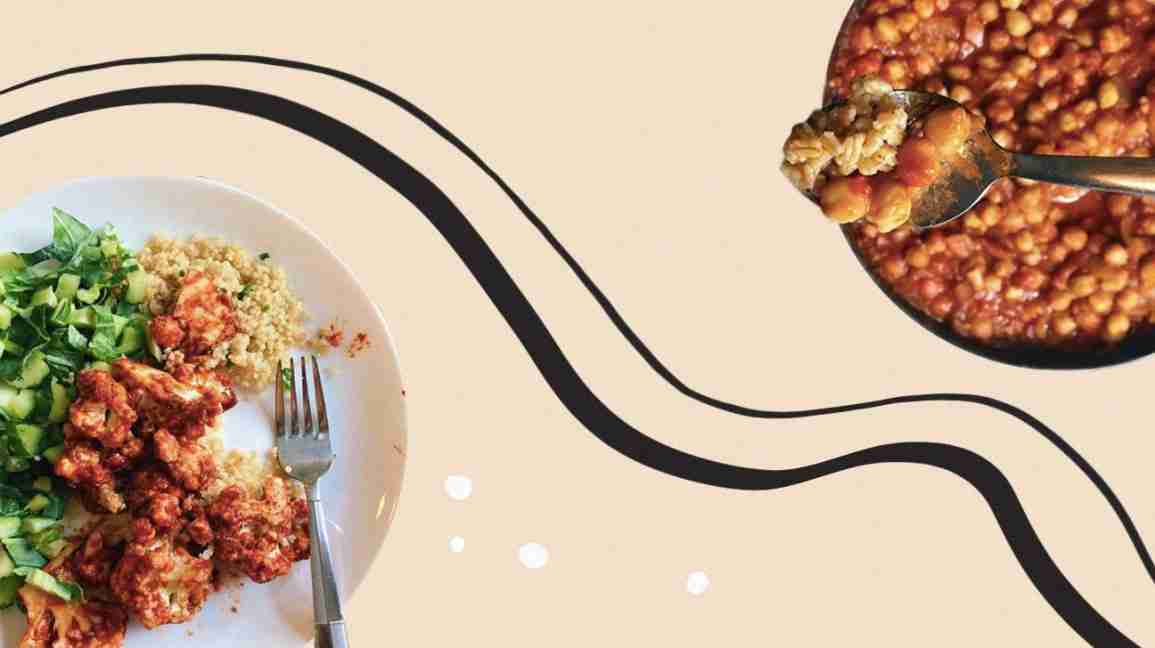From concerns over protein to variety, here are 6 debunked myths about plant-based nutrition.
Nutritional advice can be confusing and worrisome. We want to eat healthy to fuel our bodies, but where do we start? Myths often trip us up and keep us second guessing our dietary choices, so it’s important to understand what’s truth and what’s… well, not.
When I first discovered plant-based nutrition and learned of its health benefits, I felt torn. While I was excited to give it a try, I still had my reservations — these were mainly down to the many myths I’d heard about this type of diet.
Mainly, I felt restricted in what I could cook, and the task of adding to my recipe repertoire seemed daunting. As I learned more about this type of nutrition and expanded my culinary capabilities, however, I realized that a plant-based diet is diverse, colorful, highly nutritious, and accessible.
While I did all that learning independently, you won’t have to. Below, I’ve debunked six of the most common myths about plant-based nutrition. Read on if you have concerns that you want addressed.
This is, by far, the most common myth. As a medical scribe (personal assistant to a physician) and personal trainer, the most pressing questions I encounter about plant-based nutrition is: “Where will I get my protein?” or “Do I need to combine foods to get adequate protein?”
The Recommended Daily Allowance (RDA) for protein for most people is 0.8 grams of protein per kilogram of healthy body weight. This is achievable while following a plant-based diet. There are a multitude of plant foods that are rich sources of protein. These include:
- tofu
- lentils
- beans
- nuts
- seeds
- whole grains
Even individuals who require more protein, such as highly active adults, seniors, and children, can successfully increase their intake by consuming these foods.
The American Dietetic Associationagrees that well-planned diets that limit or exclude animal products are healthful and nutritionally adequate to those that don’t. Moreover, plant-based diets are also associated with lower rates of heart disease, hypertension, cancer, and type 2 diabetes.
Finally, protein from a variety of plant foods, especially starches like rice, beans, and corn, eaten during the course of a day supplies enough of all essential amino acids. Ultimately, eat plants to your heart’s desire, and rest easy knowing you’re getting more than enough protein if your caloric needs are being met.
Often, people think that because following a vegan diet can be expensive, following a whole-food, plant-based diet is also expensive. This, however, isn’t necessarily the case. Plant-based nutrition focuses on minimally processed foods. So those vegan ice creams, cheeses, and salad dressings, which might cost a pretty penny, aren’t what you’ll want to focus on in this diet.
So where do the savings come in? First and foremost, fruits, veggies, and legumes can all be purchased frozen or canned — just try to opt for low-sodium options where possible. Not only does this mean paying less, but these versions can be stored for long periods of time.
More specifically, fruits and vegetables can also be purchased seasonally from farmer’s markets at a lower cost than off-season produce at grocery stores. As for grains and legumes, these can be purchased dried, in bulk, and also stored for a long time.
And if you add a few of your favorite spices, all of these options can be transformed into a variety of exciting and delicious dishes.
As I mentioned earlier, when I first went on a plant-based diet, I was at a loss as to what I could eat. Looking back, it’s clear that my diet had been so centered on chicken, dairy, and highly processed foods that what I needed was a shift in perspective.
Now, it feels like I have a world of options at my fingertips. Meats can be replaced with mushrooms, tofu, and legumes in dishes. Cheese alternatives can be homemade with blended nuts and spices. Date-sweetened desserts — as opposed to sugar- or syrup-based treats — are rich and delicious.
Get comfortable taste-testing different vegetables, fruits, and legumes. Just recently, I finally gave roasted Brussels sprouts a try with a creamy Dijon dressing and it was swoon-worthy. Be adventurous, and you won’t be disappointed.
Start swapping Not sure how to start? Choose one of your favorite dishes — mine is lasagna — and Google search “plant-based [your favorite dish].” You’ll likely find a plant-based way to recreate your favorite meal.
This myth closely follows the first. Those of us who love fitness, and perhaps even compete, care deeply about muscle growth and physical performance.
In fact, strongman competitor Patrik Baboumian eats a plant-rich vegan diet, as does ultra-endurance athlete, Rich Roll. It’s important to remember that muscle growth is stimulated by strength training, not protein intake. So, pump that iron and consider following your workout with leafy greens, beans, and seeds.
Often, clients, patients, or friends express major reservations about switching to a plant-based diet based on the fear of being hungry. Because plants are low in calorie density, it subjectively seems as though they can’t be satisfying. However, as fruits, vegetables, whole grains, and legumes are all high in fiber — which is likely to leave you feeling fuller, for longer — this shouldn’t be a concern.
And while only
This myth couldn’t be further from the truth. Plants are, by far, the most
That said, plant-based eaters should supplement with vitamin B-12, as this vitamin comes from the soil. This is the only vitamin you can’t get on a plant-based diet.
Despite common myths, following a plant-based diet can provide you with adequate macronutrients, and doesn’t have to be boring or cost you the contents of your entire paycheck. So, if you’re still considering a plant-based diet, it’s time to write out a grocery list, invest in a recipe book (or two) and start cooking!
Sara Zayed started Posifitivy on Instagram in 2015. While working full time as an engineer after graduating from college, Zayed received the Plant-Based Nutrition certificate from Cornell University and became an ACSM-certified personal trainer. She resigned from her job to work for Ethos Health, a lifestyle medical practice, as a medical scribe in Long Valley, NJ, and is now in medical school. She’s run eight half-marathons, one full marathon, and strongly believes in the power of whole-food, plant-based nutrition and lifestyle modifications. You can also find her on Facebook and subscribe to her blog.





